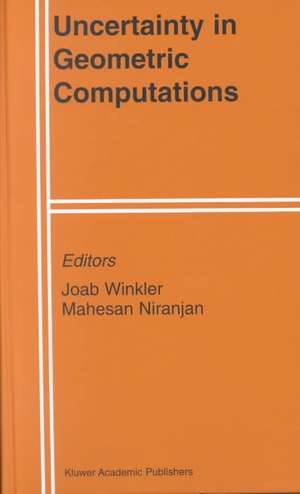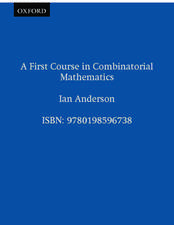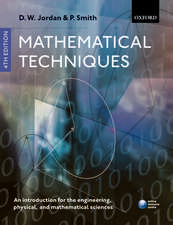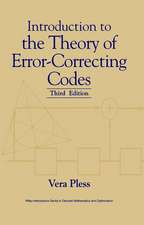Uncertainty in Geometric Computations: Kluwer International Series in Engineering & Computer Science, cartea 704
Autor Joab Winkler, Mahesan Niranjanen Limba Engleză Hardback – 30 sep 2002
Preț: 621.43 lei
Preț vechi: 851.28 lei
-27% Nou
Puncte Express: 932
Preț estimativ în valută:
118.92€ • 124.00$ • 98.84£
118.92€ • 124.00$ • 98.84£
Carte indisponibilă temporar
Doresc să fiu notificat când acest titlu va fi disponibil:
Se trimite...
Preluare comenzi: 021 569.72.76
Specificații
ISBN-13: 9780792373094
ISBN-10: 079237309X
Pagini: 210
Dimensiuni: 179 x 229 x 19 mm
Greutate: 0.54 kg
Ediția:New.
Editura: Kluwer Academic Publishers
Seria Kluwer International Series in Engineering & Computer Science
Locul publicării:Boston, MA, United States
ISBN-10: 079237309X
Pagini: 210
Dimensiuni: 179 x 229 x 19 mm
Greutate: 0.54 kg
Ediția:New.
Editura: Kluwer Academic Publishers
Seria Kluwer International Series in Engineering & Computer Science
Locul publicării:Boston, MA, United States
Public țintă
ResearchCuprins
Contributors and Participants. Preface. 1. Affine Intervals in a CSG Geometric Modeller; A. Bowyer, et al. 2. Fast and Reliable Plotting of Implicit Curves; K. Buehler. 3. Data Assimilation with Sequential Gaussian Processes; L. Csato, et al. 4. Conformal Geometry, Euclidean Space and Geometric Algebra; C. Doran, et al. 5. Towards the Robust Intersection of Implicit Quadrics; L. Dupont, et al. 6. Computational Geometry and Uncertainty; A.R. Forrest. 7. Geometric Uncertainty in Solid Modeling; P.J. Malraison, W.A. Denker. 8. Reliable Geometric Computations with Algebraic Primitives and Predicates; M. Foskey, et al. 9. Feature Localization Error in 3D Computer Vision; D.D. Morris, T. Kanade. 10. Bayesian Analysis of Computer Model Outputs; J. Oakley, A. O'Hagan. 11. b.; T. Poggio, et al. 12. Affine Arithmetic and Bernstein Hull Methods for Algebraic Curve Drawing; H. Shou, et al. 13. Local Polynomial Metrics for kappa Nearest Neighbor Classifiers; R.R. Snapp. 14. Visualisation of Incomplete Data Using Class Information Constraints; Y. Sun, et al. 15. Towards Videorealistic Synthetic Visual Speech; B. Theobald, et al. 16. Properties of the Companion Matrix Resultant for Bernstein Polynomials; J.R. Winkler. 17. Computation with a Number of Neurons; S. Wu, D. Chen. Index.
















